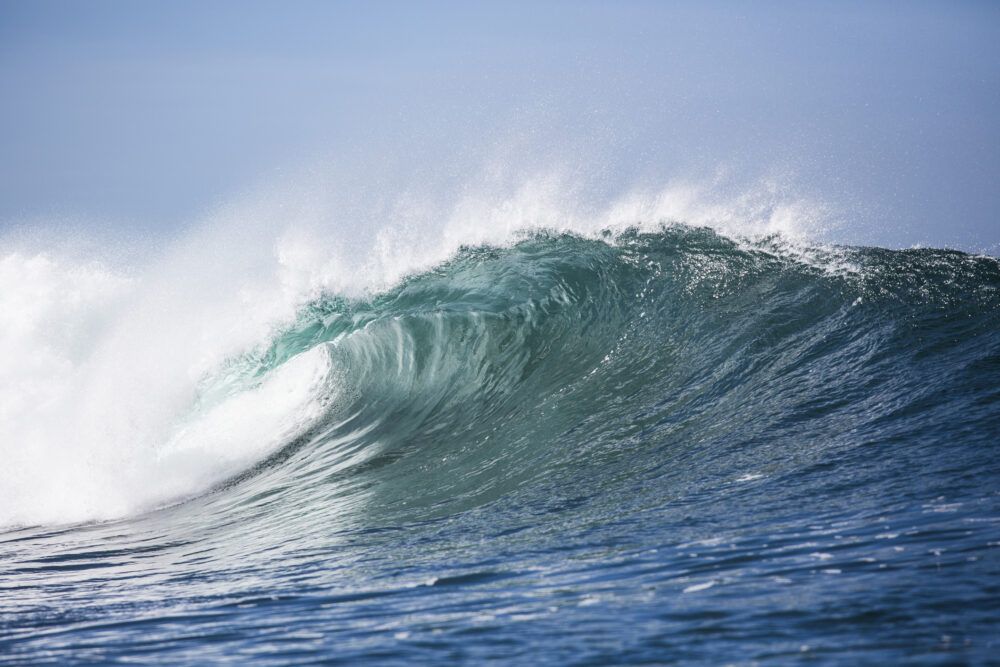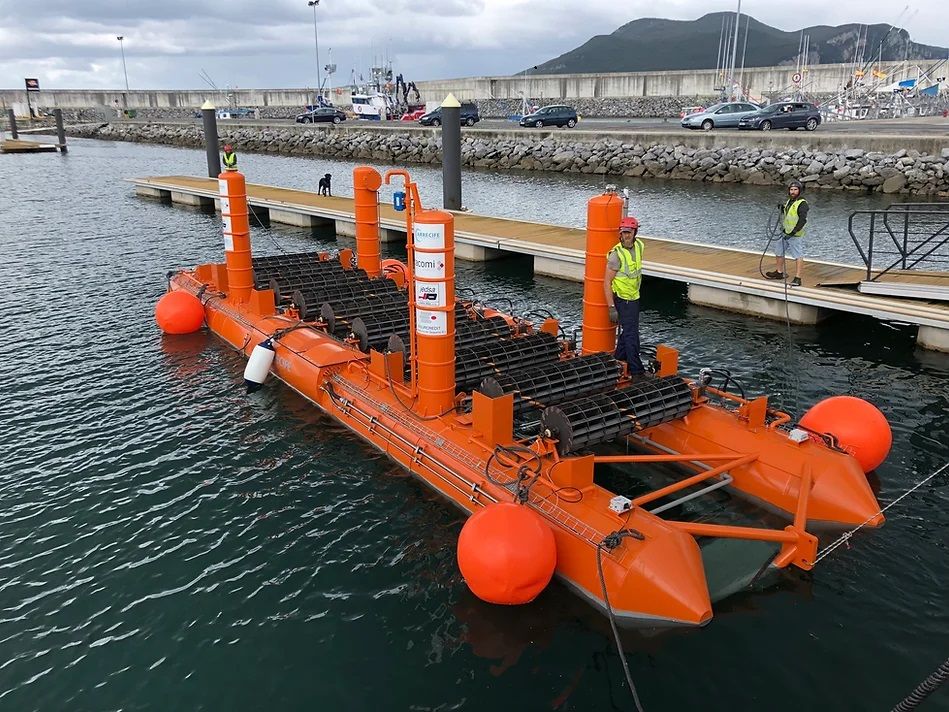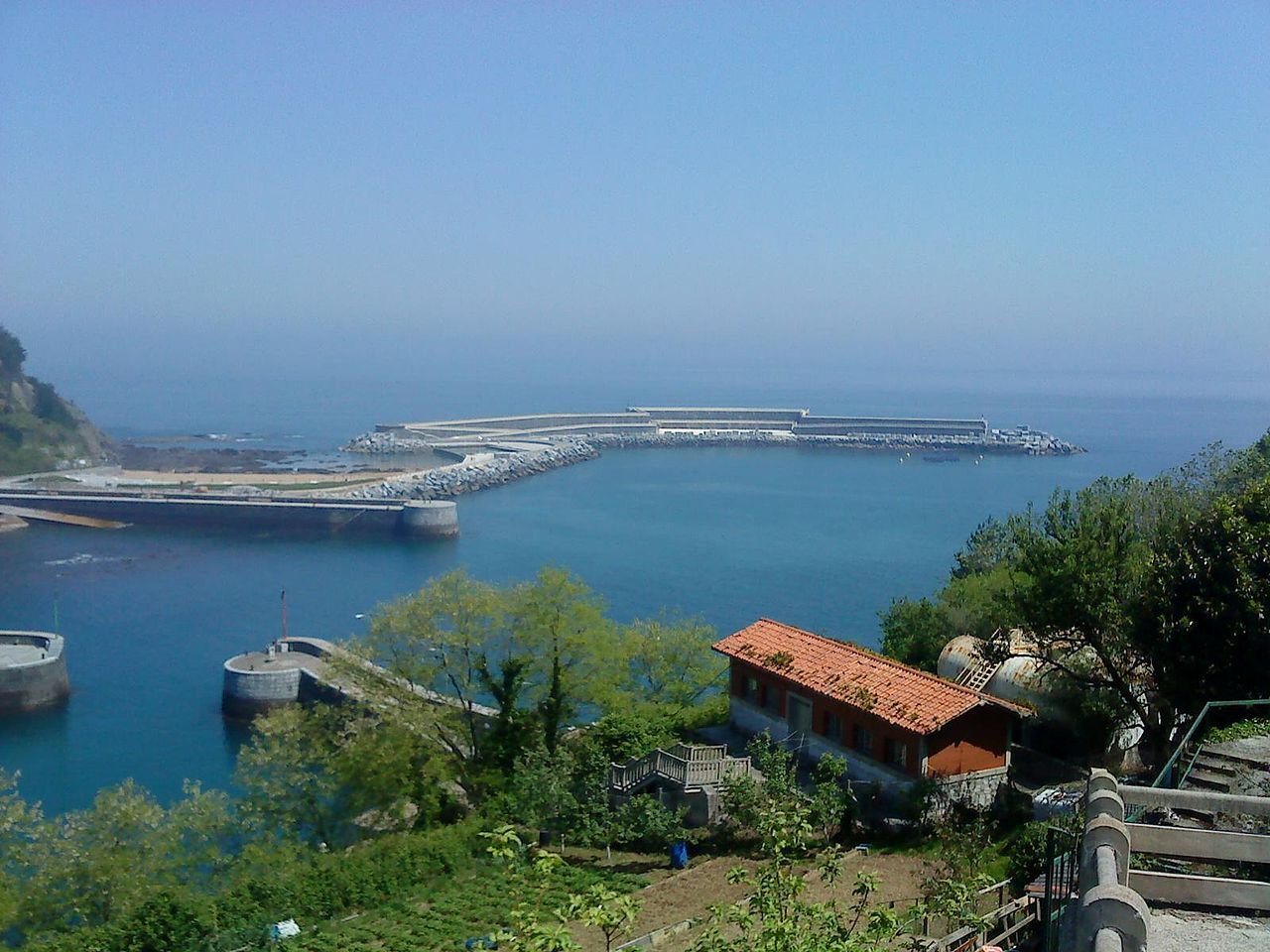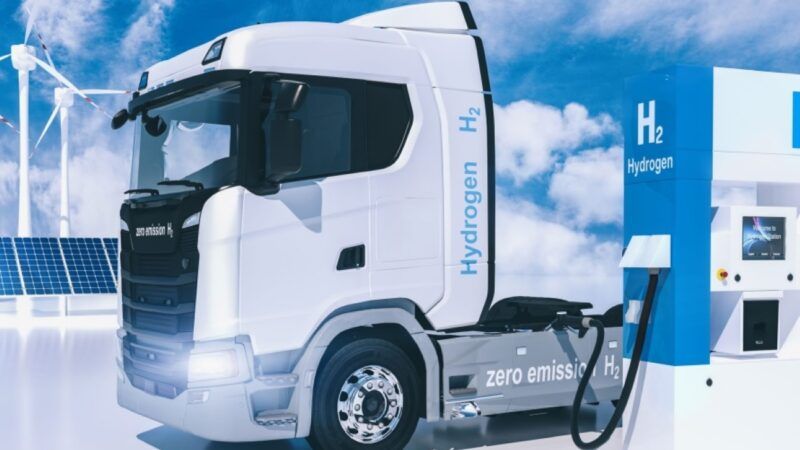 The regions with the greatest potential for developing this energy are mainly in the south and north of the globe (Getty Images).
The regions with the greatest potential for developing this energy are mainly in the south and north of the globe (Getty Images).
How about harnessing wave power? The present and future of wave energy
Ocean waves are an underexploited source of renewable energy, but one with great potential. It is estimated that wave energy, which harnesses the power of waves, can alone cover 100% of the world's current electricity demand. This presents an important opportunity for ports, which can position themselves as drivers of this type of energy and in turn benefit from its virtues.
 The regions with the greatest potential for developing this energy are mainly in the south and north of the globe (Getty Images).
The regions with the greatest potential for developing this energy are mainly in the south and north of the globe (Getty Images).
The potential of an endless resource
Seventy per cent of our planet's surface is covered by the oceans, large bodies of water that remain in constant motion thanks to the force of wind and tides. Waves are formed in the oceans and they never stop transporting energy: they do so 24 hours a day, seven days a week, every week of the year. They are therefore an inexhaustible resource from which electricity can be extracted.
Wave power is the technology that transforms the kinetic force of wave motion into electricity. One of its advantages is that it is a clean source of energy that does not emit greenhouse gases or other pollutants. It can contribute to the decarbonisation of the energy sector and help end dependence on fossil fuels imported from other countries and regions.
Like other marine renewable energies, such as tidal power, wave energy is conducive to the creation of a blue economy and provides significant socio-economic opportunities for countries with coastal areas and island territories through the creation of new jobs or local value chains.
Its theoretical potential is enormous: according to the 'Innovation Outlook: Ocean Energy Technologies' report by the International Renewable Energy Agency (IRENA), it can generate 29500 TWh per year, which means that wave energy alone could meet the current energy demand of the entire planet.
"During the whole of 2022, just over 235 TWh of electricity was consumed in Spain, according to data from Red Eléctrica de España. These data show us the importance of this resource," corroborates José Javier Alonso Mateos, professor at the School of Engineering, Science and Technology at Valencia International University (VIU).

Where and how is it obtained? The wave energy map
Wave energy has, a priori, enormous potential, but it also has a major drawback: to achieve it, wave- and storm-resistant devices need to be designed. This is one of several reasons why the world is far from reaching the numbers promised by wave energy.
According to IRENA, there are currently 33 wave energy converters around the globe, totalling a capacity of 2.3 MW. These are located in the waters off Hawaii, France, Gibraltar, Israel, Italy, Portugal and Spain. According to data from Seabased, a company that works to develop marine renewable energies, the regions with the greatest potential are located mainly in the south and north of the globe, in regions such as the Pacific coast of Chile, the Atlantic coast of Argentina and the southern Indian Ocean.
"It is obvious that in all coastal areas there are undulatory movements of the water surface, but not all of them have a sufficiently interesting potential," explains Alonso. "In Europe, the entire Atlantic coast has a good resource, the further north we are, the better. In Spain, the best area is the northwest coast, followed by the Cantabrian coast, the Gulf of Cadiz and the northern part of the Canary Islands. On the Mediterranean coast, the resource is significantly reduced, but it is also present."
Wave energy can generate 29500 TWh per year, the equivalent of the current energy demand of the entire planet
The technology that makes it happen
Unlike other renewable technologies, such as wind, wave energy has not seen a convergence towards a particular type of design. There are different technologies for capturing wave energy that are classified according to their location, orientation or operation, for example.
However, they all work thanks to converters, devices that harness both the kinetic energy and the gravitational potential energy of the waves. As explained by IRENA, some converters include oscillating water columns that trap pockets of air to drive a turbine; others are based on an oscillating body that uses the motion of waves; while another group harnesses differences in water height.
"What happens, as with other ways of obtaining energy from the sea, is that the level of development, practical experience and the environment in which the devices work means that a lot of research and projects must be carried out with support from public administrations," says the VIU professor.
One solution he proposes is to take advantage of the development of offshore wind energy to make progress in the implementation of wave energy. "An important way forward is to carry out hybridisations and take advantage, as far as possible, of the synergies of both types of projects to optimise investments and operation and maintenance costs."

Currently, there are different projects, companies and start-ups using different systems to generate wave energy. Here are some examples:
- Eco Wave Power: a Swedish company, founded in Tel Aviv in 2011, which has developed a patented technology to convert sea and ocean waves into green electricity. It owns and operates projects in Israel and Gibraltar and has collaborated with European ports such as the Port of Barcelona.
- Renewable Ocean Energy: ROE - Renewable Ocean Energy pilot project is a collaboration between public and private entities to develop a hydro turbine that harnesses the energy of waves as they break against breakwaters.
- Arrecife Energy Systems: Observing nature led the company's creators to create a type of turbine that mimics the shape of coral reefs and is capable of absorbing much of the energy of the waves.
- CETO Wave Energy Ireland: The technology developed by the company is based on a buoy submerged a few metres below the surface of the ocean that is driven by the waves, harnessing the energy to generate electricity.
- Mocean Energy: The aim of this initiative is to develop articulated rafts capable of absorbing wave energy and transforming it into electricity to power nearby equipment (such as underwater applications, control systems or vehicles such as ROVs) or wider networks such as coastal infrastructure.
In September 2022, Arrecife Energy Systems, CETO Wave Energy Ireland and Mocean Energy were among the five selected by the EuropeWave programme to develop their projects.
Ports with wave energy
One of the most paradigmatic examples of wave power generation in Spain is the port of Mutriku. The installation, created in 2011 in a breakwater, has 16 turbines that harness the power of the waves using oscillating water column technology. It can generate a power of 296 kW.
Being located on a breakwater, the plant is resistant to the force of the waves. In addition, it is not affected by another of the major drawbacks of wave technology: the difficulty for the fastening systems to prevent the device from being dragged. The Mutriku plant is connected to the distribution grid and was also the first wave plant in Europe to commercialise the energy it generates.

But all these initiatives are not always successful. Also off the coast of the Basque Country, in the port of Bilbao, the wave energy device Penguin 2, from the Finnish company Wello, recently sank after more than a year abandoned because a breakdown by its promoters, who had even received European funding.
Port Adriano, in Mallorca, the Port of Valencia and the Port of Granadilla, in Tenerife, have also initiated projects to install devices that allow them to take advantage of wave energy. The objective is always the same: to opt for a clean source of energy to reduce their environmental impact and their energy dependence.
"It is obvious that the ports are a privileged place to be able to take advantage of this type of energy resource", points out Alonso. "Moreover, any contribution of electricity produced and consumed in the same place from renewable resources will be favourable to improve their energy efficiency and reduce the impact of their activity on the environment".
The professor believes that in order to increase the number of wave energy infrastructures and projects, more resources and means must be dedicated to research. "Support for technological development is absolutely essential. Test platforms, pilot projects, direct and indirect aid lines for companies with projects, etc., must be promoted. Any action is always welcome," he says.






